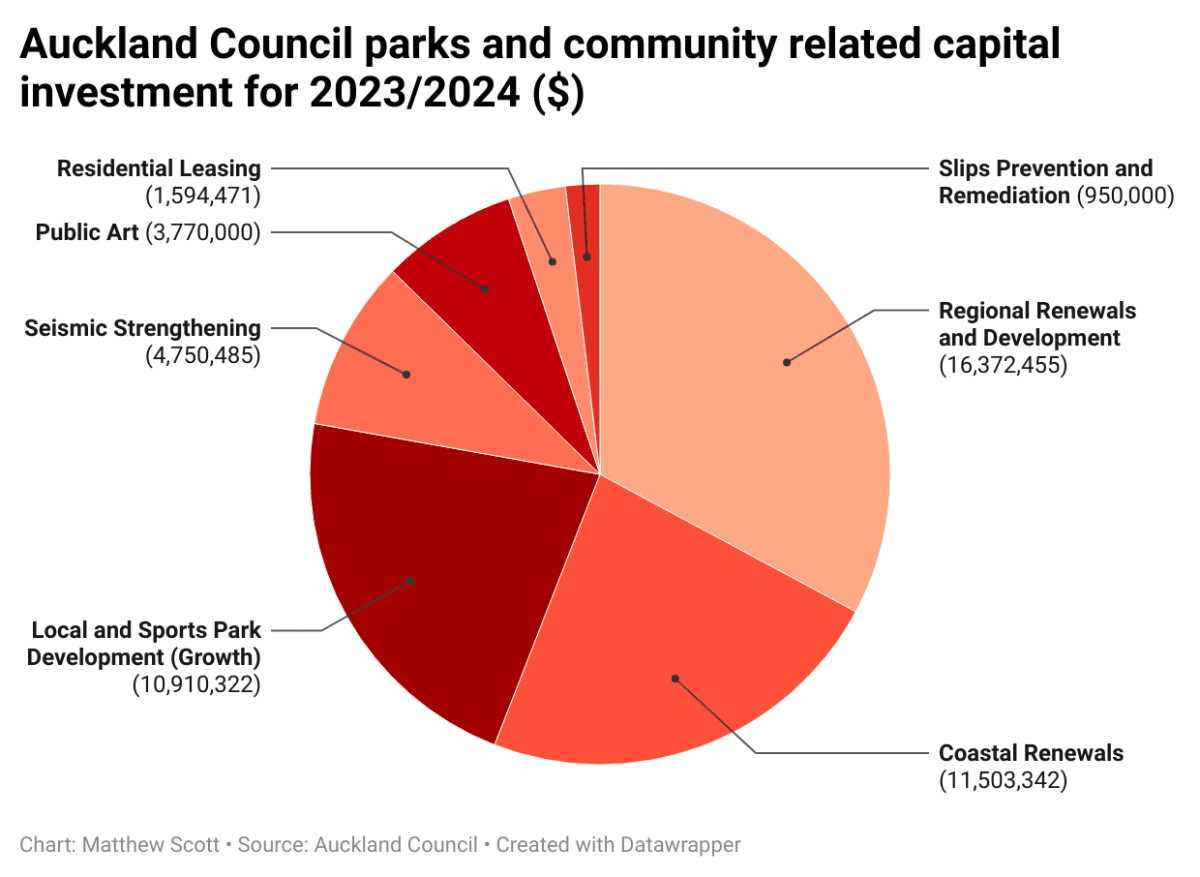
A desire for more scrutiny over earthquake strengthening costings saw Mayor Wayne Brown push back unsuccessfully on an operational budget
A nearly $50 million budget for parks and community-related capital investment has been a flashpoint for the polarised attitudes to spending across Auckland Council’s governing body.
Processes around seismic strengthening evaluation were placed under particular scrutiny by Mayor Wayne Brown and councillors like Maurice Williamson, both of whom were sceptical of whether the council was getting a good deal on the work.
READ MORE:
* Wayne Brown's quest to avoid another communication breakdown
* Auckland flood recovery could cost $4 billion
Despite the pushback, the budget was carried with 16 votes for and five votes against at a planning committee meeting this week, meaning close to $50m will be spent across the next year on renewing community assets.
The biggest chunk of this is the $16.4m going to regional renewals – a work programme including trail and hut replacements across Auckland’s parks and $1.5m across the next three years to fix storm damage.

But while Brown said he was happy with renewals to things like parks and council-funded artwork, it was the nearly $5m earmarked for seismic strengthening over the next year that gave him pause.
“I’m a bit cynical about seismic, you can go to various people, consultants and get anything you need to spend half a million on it or it’s going to be okay,” he said. “So do we have somebody looking at all of these and going really? Really? Really?”
Brown often raises his own engineering background when making points at committee tables, and Thursday’s meeting of the planning, environment and parks committee was no different.
He questioned the expertise of council staff when it came to assessing the need for seismic strengthening or their ability to tell if they are being ripped off by unscrupulous contractors.
“I’m not questioning on the parks and reserves,” Brown said. “I accept the staff’s skill sets on those type of things.”
He was worried however that staffers may have “wandered off to the nearest big spending consultant and been sucked in”.
Howick ward councillor Maurice Williamson shared the mayor’s scepticism about costings.
“I am grossly uncomfortable with the process,” he said. “I think there are things here that need some rigour and some fiscal scrutiny ... to know if there is poor quality spending in here.”
Committee chair Richard Hills seemed to be biting back some frustration at the speed bumps at the end of an already marathon meeting.
He said the councillors had been sent the budget a month before to see if there were any questions or concerns. These could then have been explored in a dedicated workshop prior to the meeting.
However, there was “radio silence” from councillors on the numbers until the meeting itself.
He also questioned whether councillors should be taking time in such committees to put every decision under the microscope, when decisions on those plans were already made by local boards and qualified council staffers.
“We are governance and not operational, so how deeply do we want to go into this,” he said.

But value for money from contractors has long been brewing as a debate issue for this crop of councillors. Waitakere councillor Ken Turner saw this budget as a perfect example of what he sees as council’s financial mismanagement.
“That spreadsheet the mayor is holding is the holy grail of how we get our council back on track financially,” he said. “There has been investment, lots of investment, we're just not getting for it what we are spending.”
Seismic strengthening will cost Auckland Council around $25m over the next three years, much of it going to notable heritage buildings, libraries and recreation centres.
Work on the Nathan Homestead in Manurewa was singled out.
The 100-year-old heritage arts, culture and event centre will cost more than $6m over the next three years to reduce earthquake risk.
Brown questioned whether that figure was inflated.
“Is anyone looking at this? Six million for the Nathan Homestead, that's a timber building isn’t it? Timber buildings tend to perform very well in earthquakes.”
Manurewa councillors Daniel Newman and Angela Dalton rose to defend the site, the jewel of a relatively short list of publicly funded assets for people in their ward.
Newman told the mayor the building was not just timber, but brick and masonry, while Dalton said it was a well used asset deserving of the work.
“Please google Nathan Homestead and you will see it’s not a little house,” she said. “This was such a valuable asset ... we are asset poor in Manurewa and this was a gift from the Nathan family to Manukau City Council and it is used by so many people in our community for so many things ... it deserves to be earthquake strengthened.”
Auckland is classed at low risk of a moderate earthquake.
Even so, anywhere in the country can experience an earthquake, and damage is possible from seismic activity a long distance away.
Legislation from 2017 required building owners to make identified earthquake-prone buildings compliant within a 35-year timeframe, and 45 years for heritage buildings.
The council plays both a regulatory role for private property owners, but must also follow the law itself – renewing its own assets of around 2000 buildings and structures across the region.







